Home » Construction Blogs
Category Archives: Construction Blogs
Sun Protection Tips For Construction Workers

For many, the summer months mean vacations at the beach, lounging by the pool, and spending more time outside in the sun. For construction workers, summer means working long hours in the hot sun. All that time in the sun can lead to an increased risk of sunburn, sun poisoning, and skin cancer.
![]()
Did you miss our previous article…
https://www.arizonasolarsociety.com/?p=1791
Top 10 Major Upcoming Alberta and British Columbia Construction Projects – Canada – July 2021
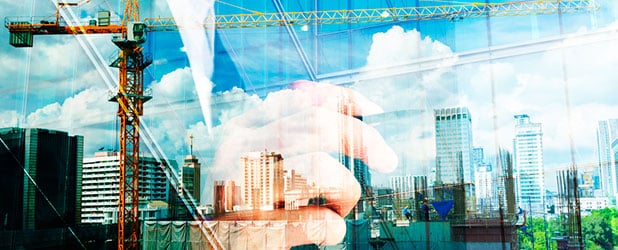
The accompanying tables shows the top 10 major upcoming Alberta and British Columbia construction projects in Canada. They are all in the planning stage and are mainly new projects, but may also involve additions and/or alterations.
![]()
Did you miss our previous article…
https://www.arizonasolarsociety.com/?p=1761
Top 10 Major Upcoming Industrial and Water Treatment Construction Projects – Canada – August 2021
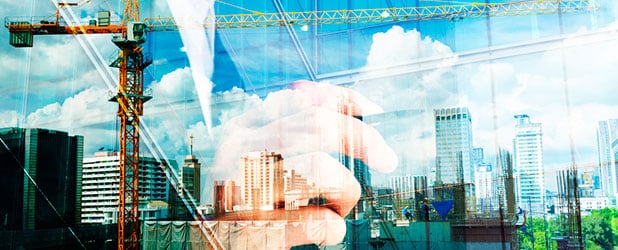
The accompanying tables show the top 10 major upcoming industrial and water treatment construction projects in Canada. They are all in the planning stage and are mainly new projects, but may also involve additions and/or alterations.
![]()
Did you miss our previous article…
https://www.arizonasolarsociety.com/?p=1730
November’s Nonresidential Construction Starts +2% M/M, -8% Y/Y, & -2% YTD
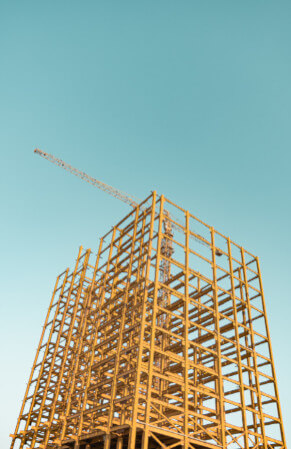
November Light on Megaprojects
ConstructConnect announced today that November 2021’s volume of construction starts, excluding residential work, was $30.4 billion (see shaded green box, bottom of Table 8 below), an increase of +1.7% compared with October 2021’s level of $29.9 billion (originally reported as $28.8 billion).
![]()
Start Prepping Now for the Next Normal in Construction

Construction is the largest global industry that accounts for 13% of global GDP. It encompasses infrastructure, industrial structures, and real estate and today many companies are adjusting their business models to embrace the next normal in construction.
![]()
Did you miss our previous article…
https://www.arizonasolarsociety.com/?p=1605
Canada Reached Some Labor Market Milestones in August
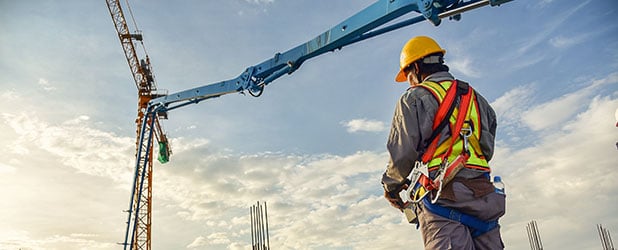
According to Statistics Canada, the Canadian total jobs count climbed by +90,000 in August to sit at just under 19 million. The year-over-year gain in employment has been only slightly under a million jobs (+958,000). Ontario (+419,000 jobs) and British Columbia (+201,000 jobs) have been the two provinces with the best records in nominal jobs creation over the past 12 months.
![]()
Did you miss our previous article…
https://www.arizonasolarsociety.com/?p=1601
Top 10 Major Upcoming Convention Center and Military Construction Projects – U.S. – December 2021
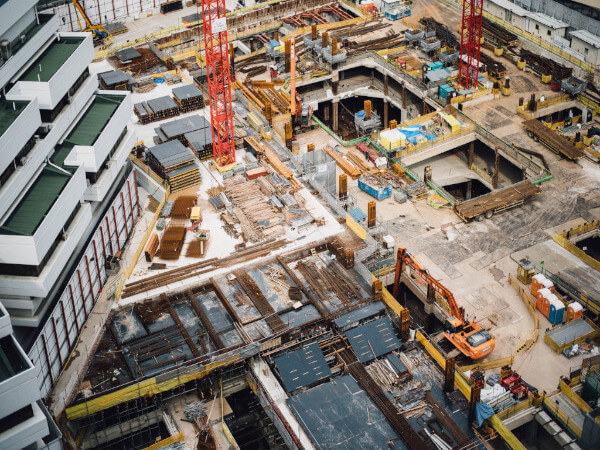
The accompanying tables show the top 10 largest upcoming Convention Center and Military construction projects in the United States. They are all in the planning stage and are mainly new projects, but may also involve additions and/or alterations.
![]()
Did you miss our previous article…
https://www.arizonasolarsociety.com/?p=1593
Digital Builder Ep 23: Harnessing the Power of 3D Printing in Construction
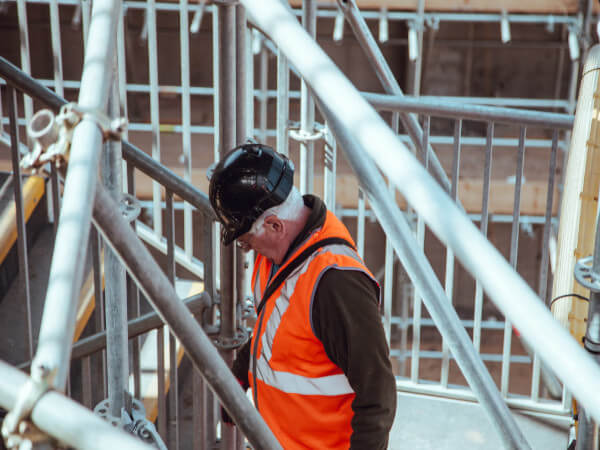
Many industry leaders have heard of 3D printing, often in the context of concrete or small-scale homebuilding. But that’s just the tip of the iceberg. When leveraged successfully, 3D printing can play a key role in structural components (big and small), spare parts, fixtures, and even the furniture that inhabits a space. But what does it all mean to your projects?
Listen to the episode now
You can also listen to this episode on Apple Podcasts, Spotify, Stitcher, Google Podcasts, and anywhere else you get your podcasts.
On this podcast episode
Our guest, Stephan Mansour, is a 3D Printing & Emerging Technology Advisor at MaRiTama Ltd. Stephan is leading the international team that’s developing global 3D printing standards from the ground up, and in this episode, he takes us on a journey into the world of 3D printing in construction.
We discuss:
- Common misconceptions about 3D printing
- How supply chain issues have increased interest in 3D printing for construction
- How to implement 3D printing in your organization
- How upcoming standards will enable mass adoption
“Everything can be 3D-printed; it’s just a matter of how far you want to go, how scalable it is, and how much money you’re going to put in.” — Stephan Mansour
Podcast highlights from Episode 23
To kick things off, Stephan shared a high-level overview of 3D printing in construction. According to him, 3D printing is “laying one material over another, to build a structure that you normally have in every construction site.”
He continues, “it’s based on a 2D model or design, that is later sliced into robotic language in order to achieve the print. So the material is tailored sometimes to the printing application that is available.”
In terms of materials used, Stephan says that 3D printing can use cement, polymer plastic, synthetic materials, or different types of recycled materials.
Debunking the myths of 3D printing
3D printing is rapidly gaining steam in the construction industry. In fact, The 3D printing construction market is expected to hit $1.5 billion by 2024.
But despite its growing popularity, there are still a number of misconceptions surrounding the technology. According to Stephan, here are some of the most common 3D printing myths.
Myth #1: 3D printing is a new process
Some people think that 3D printing is a new thing, but nothing could be further from the truth, says Stephan.
“The early first 3D printing machine was created in the 1930s and 1940s by a company called Urschel, based in Indiana. They actually printed several structures, and the same technology is still being used by various technology providers today,” he explains.
“So it’s not a new technology; it started off in the 1930s and ’40s. It picked up again back in the 1990s, and since then, it’s continued to gain speed.”
Myth #2: You can print anything in 24 hours
Another misconception is about the speed with which you can print. Stephan remarks that while the actual printing time may take 24 hours, the construction period of a building can take two to three weeks.
“Expecting to have a house available and finished in 24 hours just doesn’t work,” he adds.
Myth #3: 3D printing is cheap
There’s also the notion that 3D printing structures only cost $4,000 or $5,000.
“I’d like to debunk that,” says Stephan, who adds that while affordable housing is possible, you can only achieve it when you’re building things at a large scale.
“If you’re doing 100 houses, 1,000 houses—then yes, the price of technology and material will go down. But when you’re building a single house or just a handful of houses, you’re still carrying on the price of technology, material, logistics, and so on, onto those five houses.”
Myth #4: You need a large R&D department to implement 3D printing
Think 3D printing requires a ton of R&D? Think again. According to Stephan, there are numerous opportunities to get started with 3D printing without pouring a lot of money into research and development.
“There are many ways you can start getting into 3D printing. You can do it through collaboration with technology providers, pilot projects, and starting small. From there, you’ll be able to move little by little, to actually having 3D printing as part of your toolbox in the construction process.”
The various use cases of 3D printing
Some construction professionals might think that 3D printing is all about concrete and building houses. However, there are many other applications for the technology. As Stephan puts it, “you could do many things with 3D printing, just like you do anything normally with conventional means of concrete, mortar, or brick.”
Intricate facades
Stephan shares that 3D printing “can play a key role in creating facades for buildings.”
This is particularly true for projects that call for intricate and unique designs. With 3D printing, the facade “doesn’t have to be square, and you don’t have to do a mold in order to achieve very artistic or inquisitive designs that you want to get into,” says Stephan.
Parts and fixtures
In addition to printing the house itself, Stephan says you can also use 3D printing for spare parts and fixtures.
“You can 3D print everything and anything in the house, in terms of fixtures, FTS, doorknobs, lintels, door frames, doors themselves, window frames,” he shares.
Furniture
3D printing can be used to print furniture and eliminate the lead time associated with purchasing and delivering them.
Doing so may also help you be more sustainable. “Just looking at the waste that each construction site actually produces, you can take the wood that is discarded from the formwork, turn that into dust, and print furniture,” says Stephan.
3D printing can improve efficiency in remote projects
Being able to print spare parts, furniture, and materials can also come in handy when dealing with remote projects or when you’re facing inventory shortages and supply chain issues.
As Stephan points out, “when you talk about oil and gas and remote projects, there’s a lot of problems that happen in consortium sites. Inventory can be an issue and you may not have the right piece at the right time. When this happens, there’s usually a two- or three-week lead time.”
He continues, “3D printing can be very effective in providing that material. You can have parts available within a few hours or a day at most, as opposed to waiting three weeks. You don’t have to put the whole project on a standstill just because you’re waiting for, say, a $10 piece that is crucial in operations.”
How to get started with 3D printing
Implementing 3D printing isn’t just about purchasing a printer and building things from scratch. You need to consider a number of factors to ensure that your initiatives are successful.
Stephan says, “Another misconception that we need to rebuff is that you can simply buy a 3D printer and presto—everything’s going to work. But that’s not the case. You have to think of 3D printing just like you would for any other piece of equipment in your construction site.”
Start small and address a pain point
Just like when investing in a large piece of equipment, you must determine a need for it before going out and purchasing the technology.
As Stephan puts it, “you’re not going to buy a multimillion-dollar piece of equipment to sit on your construction site, and now scratch your head and figure out, ‘Okay, how am I going to use this?’”
Instead, you must first identify a pain point within your construction projects or operations and then figure out how a 3D printer can help you solve the issue. For instance, if you’re constantly running into delays for a particular part or fixture, you may consider investing in 3D printing so you can produce the right parts more quickly.
Determine your scope and investment
“There are many different variations, versions, and materials out there when it comes to 3D printing, so there’s no one size fits all solution,” says Stephan.
The right setup depends on your project scope, objectives, and budget. So, make sure that these elements are ironed out at the beginning of your 3D printing journey.
Have a clear idea of what you’d like to achieve and the investment you’re willing to make, and then let those factors inform your decisions on what materials or printers to utilize.
Find the right partner
“Collaboration is key,” remarks Stephan. It’s essential that you find the right partners for your 3D printing projects.
Who to partner with depends on the project as well as your capabilities. In some instances, you may need to bring in a technology partner who can help you get up and running. Maybe you need to find new vendors who can supply the materials required.
Whatever the case, be aware of your capabilities and limitations, then use that knowledge to find the right collaborators.
The bottom line with 3D printing in construction
3D printing is gaining traction in the AEC industry, and it will continue to do so in the near future. The specific role that 3D printing will play in your organization will depend on your projects, so take the time to evaluate your pain points and objectives then find technology solutions and partners that can fill the gaps.
New podcast episode every two weeks
Autodesk’s construction podcast, Digital Builder, is hosted by me, Eric Thomas. New episodes of the Digital Builder podcast go live every two weeks.
If you’d like to take an even deeper look at 3D printing, catch the full episode of Digital Builder to learn more.
Listen to the Digital Builder Podcast on:
- Apple Podcasts
- Spotify
- Stitcher
- Google Podcasts
- or wherever you listen to podcasts
The post Digital Builder Ep 23: Harnessing the Power of 3D Printing in Construction appeared first on Digital Builder.
August’s Nonresidential Construction Starts -14% M/M, -11% Y/Y, & -6% YTD
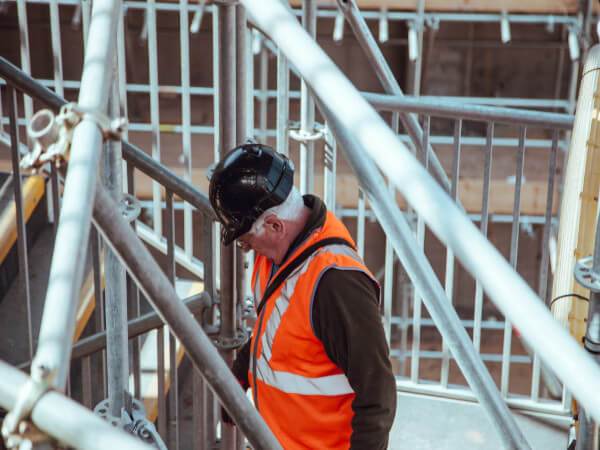
High-Tech Giants Step to the Plate
ConstructConnect announced today that August 2021’s volume of construction starts, excluding residential work, was $33.0 billion (see shaded green box, bottom of Table 8 below) a decrease of -14.2% vs July 2021’s level of $38.5 billion (originally reported as $37.6 billion).
![]()
Eamon Costello Future-Proofs Its 45-Year-Old Business with Autodesk Build
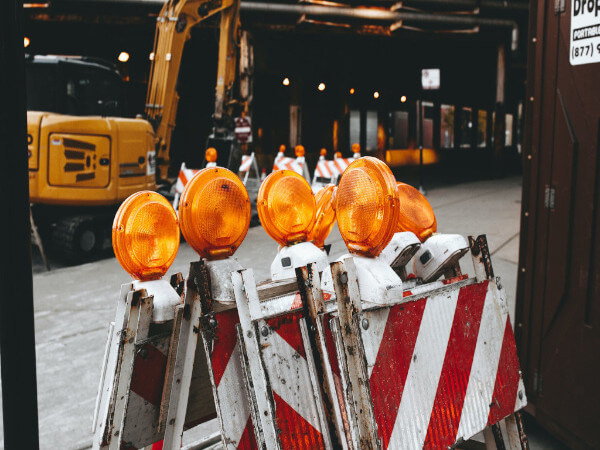
Eamon Costello is a construction services company based in Tralee, Ireland. For over 45 years, the family-owned business has worked across a wide range of disciplines, from healthcare and education to residential and conservation projects.
The team at Eamon Costello is focused on delivering the highest quality projects at the best value for clients. The company’s longevity is testament to the experience and commitment in the business. However, some of the company processes had become outdated – and the organisation was keen to innovate.
Overcoming inconsistency and onerous forms
Director Paul Lynch explains, “The construction industry is virtually unrecognisable from where it was even in 2000. In Ireland, we’ve seen the introduction of BCAR, and technology has progressed leaps and bounds. We had systems that were fit for purpose when they were initiated, but were laboursome and time-consuming.”
Processes at Eamon Costello were largely paper-based, with staff taking large amounts of time to compare drawings manually and fill in onerous forms. Inconsistency was a major challenge. “Younger people especially had no interest in filling out forms because they took so long, and the standard of information we were getting back could be diabolical.”
In 2019, the company leadership team had a “Eureka moment” and decided to re-evaluate the processes in place across the whole business. It was clear that a modern technology platform was needed to support data management for the long-term. Given Autodesk’s commitment to continuing product innovation, Eamon Costello chose Autodesk Build, a unified construction management software platform for connecting teams, workflows and data.
Future-proofing problematic processes
Eamon Costello introduced Autodesk Build on a pilot project, an €11 million social housing project running across multiple disciplines. “We were keen to find a good meaty project with lots of trade involvement to assess the system against,” Paul explained.
The implementation involved a reassessment of the company’s overall processes, which created some difficulties. “We hadn’t fully anticipated the number of internal challenges that would come to light during the process. It was nothing to do with the Autodesk system, but there were residual challenges that we wanted to solve.”
The pilot project was a learning experience. For example, initially the team planned to convert the existing Word and Excel forms into Smart PDFs, when actually switching straight to the Autodesk format brought more benefits. Now, Eamon Costello has a new folder structure and forms in place and is using the team’s feedback to finalise the system. “Everything will be much more streamlined for the future.”
An intuitive solution for managing information
Eamon Costello is using a wide range of functions on Autodesk Build to share information. The issues management system is already proving very beneficial. “Previously our safety audits were completely paper-based. Now, we can capture live issues on the site and assign them to specific people; that’s a huge benefit for us,” Paul explains.
The team is finding Autodesk Build very intuitive. “We’re working with many people who come from a very low base in terms of their IT capability. However, anyone who has taken the time to follow the tutorials and immerse themselves in the system is completely fine with it. It’s a real endorsement of the platform.”
Experienced members of the team are using Autodesk Build to make their working lives easier. “We have foremen who are in their mid-sixties and aren’t very high tech themselves, but are finding the platform really helpful,” Paul notes. “They can see and tag sheets at the touch of a button. Rather than being locked in an office looking at racks of drawings, they can take their phones out on-site and bring up anything they want. It’s a big achievement.”
Improving efficiency and traceability
Autodesk Build has now been rolled out across Eamon Costello, with five live projects and three more to come shortly. With around thirty users to date, Paul believes that the time-saving has been the biggest benefit so far. Sheet comparisons, for example, had been completed manually, with site managers and engineers taking what were originally hardcopy drawings and comparing them line by line.
“With Autodesk Build, you can take two versions of a drawing and see the changes that have been made instantaneously – without the risk of missing anything, like previous revisions,” Paul explains. “In fifteen minutes, I had trained our office administrator to complete sheet comparisons; it’s invaluable from a site management perspective.”
Traceability across the business has also improved. “Previously it was a huge chore for people to complete checklists and take photos back into the office. Now, documentation and quality checks can be completed digitally, providing us with information in a standardised format. It’s much easier for the team, and we’re benefitting from a higher quality of information and traceability.”
Using digital plans on-site is also beneficial for sustainability. Prior to the introduction of Autodesk Build, Eamon Costello printed 52,473 sheets and 1795m2 of plotted paper over a two-year period. Now, that printing has been completely eliminated on the projects where Autodesk Build is in place, saving paper and energy and creating more environmentally-friendly builds.
Ways of working ready for the future
Introducing Autodesk Build has already helped Eamon Costello to deal with the challenges caused by the Covid-19 pandemic, such as using the platform to host remote site meetings. Having a centralised source of information has also made the business more resilient to unexpected events, such as staff absences.
“There was one project where we lost an engineer, and the site manager was on his own for a week and a half. He said that he probably wouldn’t have coped without Autodesk, but with the platform in place he had the information he needed and could still cover the ground even in the engineer’s absence,” Paul recalls.
As well as supporting the current team, Paul believes that having modern construction software in place will help to attract younger people to the business. “We’re constantly recruiting for all kinds of roles. As soon as we tell them that we use Autodesk, you can see them getting engaged and interested.”
In the year ahead, Paul and the team will focus on making use of even more features on Autodesk Build, including progress tracking, scheduling and assets. The next stage will be to get collaborators, including designers and subcontractors, onto the platform to further improve project processes. “The Autodesk product development team has been hugely responsive to our needs. With a few minor developments, it will be a fantastic solution that will grow with us and help us to keep up with the future of the industry.”
The post Eamon Costello Future-Proofs Its 45-Year-Old Business with Autodesk Build appeared first on Digital Builder.
Did you miss our previous article…
https://www.arizonasolarsociety.com/?p=1571